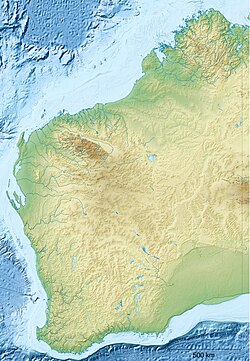- Northern project sign
- Catchment project sign
- Threatened Ecological Community sign
- DEC Nature Conservation Monitoring Site sign – Perth Hills District, Swan Region
- Old CALM sign with various labels, marsh area of south west corner in background
- Isopogon dubius
- Grevillea bipinnatifida
- Orthrosanthus laxus
| Drummond Nature Reserve | |
|---|---|
 View from the south western boundary into the reserve; the yellow flowers are species of Acacia | |
| Location | Western Australia |
| Nearest city | Bolgart |
| Coordinates | 31°19′01″S116°24′25″E / 31.317°S 116.407°E |
| Area | 439 ha (1,080 acres) [1] [2] |
| Established | 1993 |
| Governing body | Department of Biodiversity, Conservation and Attractions |
The Drummond Nature Reserve is an A class nature reserve 10 kilometres west of Bolgart, Western Australia. Named after the botanist James Drummond, the reserve has 439 species of vascular plants within its boundaries, including two rare and seven priority species.








